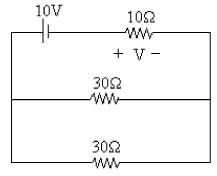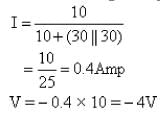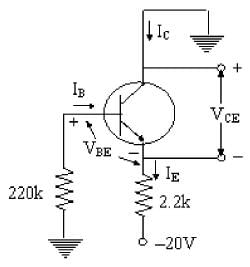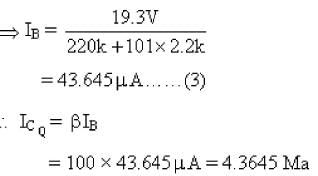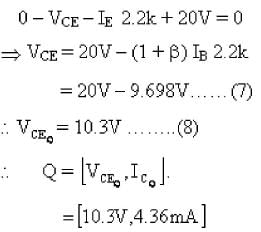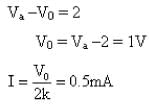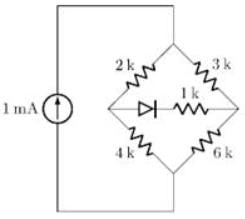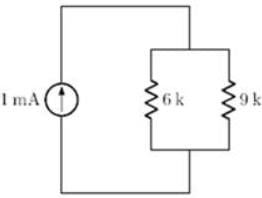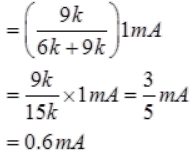Gate Practice Test: Electrical Engineering(EE)- 11 - Electrical Engineering (EE) MCQ
30 Questions MCQ Test - Gate Practice Test: Electrical Engineering(EE)- 11
Statement: All bags are cakes. All lamps are cakes.
Conclusions:
I. Some lamps are bags.
II. No lamp is bag.
Deduce which of the above conclusion logically follows statements:
Conclusions:
I. Some lamps are bags.
II. No lamp is bag.
Deduce which of the above conclusion logically follows statements:
Man does not live by __________ alone.
| 1 Crore+ students have signed up on EduRev. Have you? Download the App |
Extreme focus on syllabus and studying for tests has become such a dominant concern of Indian students that they close their minds to anything __________ to the requirements of the exam.
Select the pair that best expresses a relationship similar to that expressed in the pair
LIGHT : BLIND
In an exam, the average was found to be 50 marks. After deducting computational errors the marks of the 100 candidates had to be changed from 90 to 60 each and average came down to 45 marks. Total number of candidates who took the exam was:
A solid 4cm cube of wood is coated with red paint on all the six sides. Then the cube is cut into smaller 1cm cubes. How many of these 1cm cubes have no colour on any side?
One of the warmest winters on record has put consumers in the mood to spend money. Spending is to be the strongest in thirteen years. During the month of February, sales of existing single family homes hit an annual record rate of 4.75 million. This paragraph best supports the statement that:
The age of father is 4 times more than the age of his son Amit. After 8 years, he would be 3 times older than Amit. After further 8 years, how many times will he be older than Amit?
Pipe A, B and C are kept open and together fill a tank in t minutes. Pipe A is kept open throughout, pipe B is kept open for the first 10 minutes and then closed. Two minutes after pipe B is closed, pipe C is opened and is kept open till the tank is full. Each pipe fills an equal share of the tank. Furthermore, it is known that if pipe A and B are kept open continuously, the tank would be filled completely in t minutes. Find t?
The value of ‘V’ from the given below circuits is_____________ volts.

For eliminating Harmonics from the emf generated the coil span must be.
In HVDC converter stations equipment using thyristor it is necessary to use a large number of thyristors in series because
The holding current of a SCR is 18mA. Its latching current will be
In a 132 kV system, the phase to ground capacitance is 0.01 µF and the inductance is 4H. Calculate the voltage appearing across the electrodes of C.B. If a magnetizing current at 5 amp is interrupted. Calculate the critical resistance to be connected, to eliminate restriking.
A phase lead compensating network has its transfer function The maximum phase lead occurs at a frequency of:
The time taken for the output to settle within 2% of step input for the control system represented by is given by
When 30V dc is applied to the vertical deflection plates of CRO, the bright spot moves 1cm away from the center if 30V (rms) is applied then the picture on screen
A compound dc generator is delivering full load current at a terminal voltage of 230V. It’s
series field winding get’s short circuit. If it’s terminal voltage becomes.
1. More than 230V it is over compounded
2. More than 230V it is differential compound
3. Less than 230V it is over compounded
4. Less than 230V it is differential compounded
5. Less than 230V it is level compounded
The correct statement’s are?
An (star connected) Alternator is connected to Delta-star transformer with start neutral earthed. On the star side of transformer a single line to ground fault occurs. This is
Snubber circuit is used to limit the rate of
In the circuit shown in figure, a Silicon transistor with VBE = 0.7 V and βdc = 100 is used. The Q-point is established at
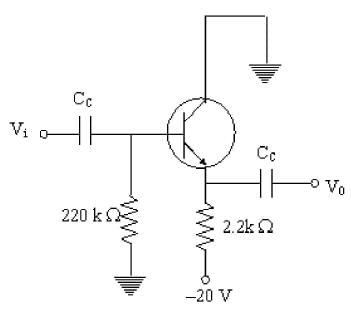
A power supply has a full load voltage of 24V. What is its no-load voltage for 5% regulation.
Assume that the op-amp as the circuits shown below is ideal. Find the current passing through the 2kΩ resistor in the circuit.
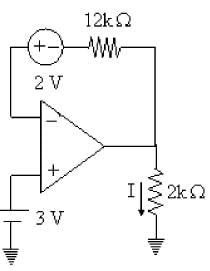
The diode in the circuit given below has VON = 0.7 V but is ideal otherwise. The current (in mA) in the 4kΩ resistor is______ mA
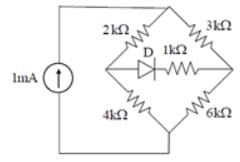
The system of linear equations:
3x + 4y = 6
2x + 3y = 5
has



